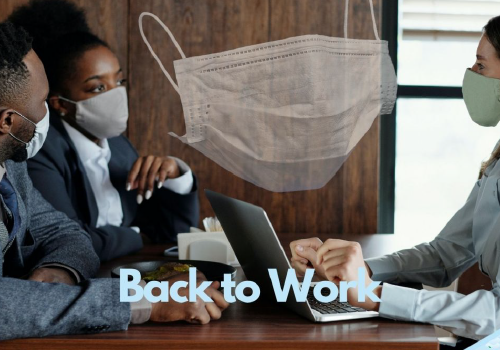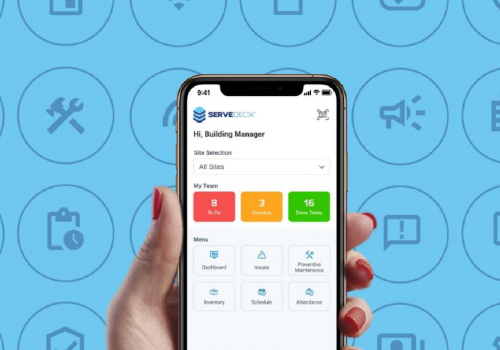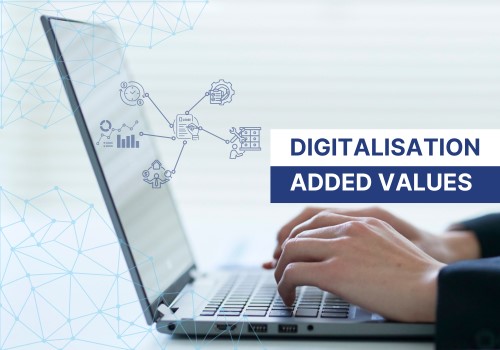ESG, IoT and PropTech, 3 Great Pillars for Facility Management Excellence

What is IoT (Internet of Things)
Oracle defines IoT as the network of physical objects—“things”—that are embedded with sensors, software, and other technologies for the purpose of connecting and exchanging data with other devices and systems over the internet. These devices range from ordinary household objects to sophisticated industrial tools. With more than 10 billion connected IoT devices in 2020, experts expect this number to grow to more than 22 billion by 2025.
Why is Internet of Things (IoT) so important?
Over the past few years, IoT has become one of the most important technologies of the 21st century. Now that we can connect everyday equipment in buildings—water pumps, centralised air-condition systems, lifts, escalators, lights and more—to the internet via embedded devices, seamless communication is possible between people, processes, buildings, and things.
By means of low-cost computing, the cloud, big data, analytics, and mobile technologies, physical things can share and collect data with minimal human intervention. In this hyperconnected world, digital systems can record, monitor, and adjust each interaction between connected things. The physical world meets the digital world—and they cooperate.
What Is Facility Management (FM)
Facilities management focuses on processes and people during their interactions within buildings.

According to the International Facility Management Association (IFMA- TX USA), facility management is a profession that encompasses multiple disciplines to ensure functionality of the built environment by integrating people, place, process, and technology.
The International Organization for Standardization (ISO) defines Facility management as the organizational function which integrates people, place, process and technology within the built environment with the purpose of improving the quality of life of people and the productivity of the core businesses.
Both these definitions are similar and refer to the “built environment”, or real estate/properties, as the subject matter where people interact in their daily living, working or playing activities.
The ISO’s definition, however, and differently from IFMA’s one, adds that FM is not only just a cost of operation but has value (ROI) as a strategic supporting service to an organization’s core business. It shall decrease costs and increase revenues while improving buildings’ management excellence.
Facilities management is the efficient coordination of all the activities related to keeping physical spaces, equipment, and infrastructures fully operational. FM improves the efficiency of single buildings, townships, complex offices, retail, leisure, healthcare, education, manufacturing, recreation, government, and a host of other revenue-generating businesses.
A facility’s operational efficiency includes, but is not limited to making sure the environment is safe by meeting relevant regulatory mandates, consistently well-maintained, and most notably, organized in a way that promotes productivity and the well-being of all users.
Every built environment needs to be managed from “tip to toe,” and, to better understand its extend of it, it will help to identify the two main categories of needed services, hard and soft services.
Hard Services
Hard services include the actual structure of the building/s and all those parts, defined as immovable, such as centralised air-conditioning, lift, electrical equipment, security system, fire and safety equipment, and so on. In a few words, hard services cover and take care of the “physical” component.

Most of these services are normally compulsory by law as they guarantee the health, well-being, and safety of permanent and occasional users. They include building and HVAC (Heating, Ventilation, and Air-Conditioning) maintenance, energy and water management, lifts and escalators, common area lighting, fire safety, plumbing, and drainage.
Soft Services
Soft services are, instead, related to ensuring the work/live/play places are comfortable, healthy, and secure. Not all soft services are needed at one time, and several can be added or removed per actual needs. The most common are housekeeping and security services, car parking facilities, pest control, waste management, recycling, furniture and equipment, information systems, document management, mail and parcel management, space management, and common areas maintenance and landscaping.
Today, most businesses depend on outsourced FM to handle all the functions above and beyond, in a well organised and integrated way.
Self-managing hard and soft services or even appointing an external provider of some of these services often results in a time consuming and expensive yet not efficient practice.
An ongoing trend, accelerated in the past two years by the pandemic, is to look for bundled services also known as Integrated Facilities Management.
This All-in-One scope of services adds great value to the work/live/play spaces while offering higher quality and efficiency to the end users. Integrated Facilities Management providers have understood that going beyond the simple management of spaces through traditional hard and soft services by adding personalised management of common needs of all businesses adds great benefits for the users while increasing the value of the managed building/s.

Some examples of these “added value” integrated services could be: move management, meeting room services, business risk assessment, catering services, vehicle fleet management, contract procurement, concierge and front-desk services, and emergency response and preparedness.
Today’s general business practice is to focus on the core activities which allow desired outcomes, this means that companies and corporations outsourcing to an Integrated Facilities Management company that bundles added-value ancillary services within their offering could greatly benefit through:
-
Improved efficiencies: A one-stop contact/control point eliminates duplicate functions and eases workflow processes.
-
Higher productivity: Preventive and planned maintenance of all equipment prevent disruptive emergency breakdowns.
-
Reduced costs: In addition to spending less on training, companies save on staffing, employee benefit, payroll expenses, inventory and more.
-
Higher efficiency and better quality control: with proven systems already in place, FM ensures consistency and reliability.
-
Better compliance to ESG frameworks: businesses need to adapt to the new needs of being environmentally friendly, socially mindful, and properly governed, and it has been proven that IFM greatly helps achieve the above.
What is ESG
ESG stands for environmental, social, and governance criteria, and it’s pivotal to how today’s businesses operate. It’s all about a company’s business model and how its products and services contribute to sustainable development.
-
E: environmental criteria involve the impact a company has on the planet
-
S: social criteria revolve around people and reputation
-
G: governance criteria is all about how a company is managed
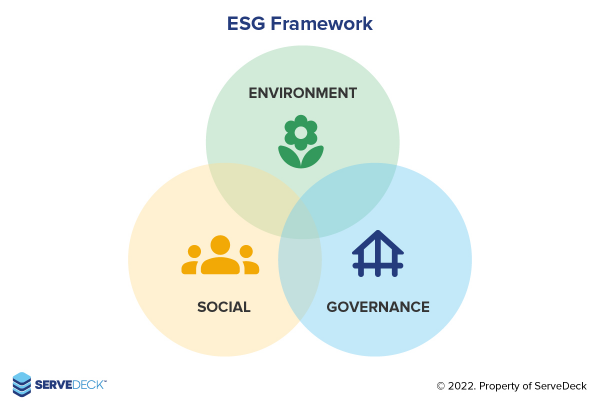
Gema Esteban, Global Head of ESG at IG4Capital, has given an excellent explanation of ESG:
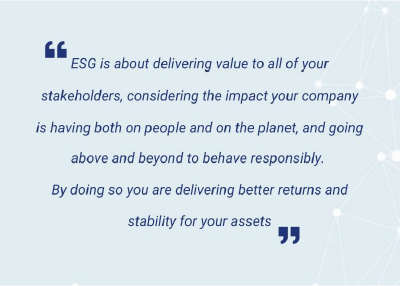
How relevant is ESG in Facility Management is easy to say. According to EnergyPost.Eu ESG-managed investments surpassed 25% of all professionally managed investments in 2019 and, at current growth rates, will become the majority of managed assets by 2025!
The chart below shows the significant increase in recent years of the number of PRI (Principles for Responsible Investment) signatories and asset owners, as well as their assets owned or under management, which is now approaching $100 trillion.
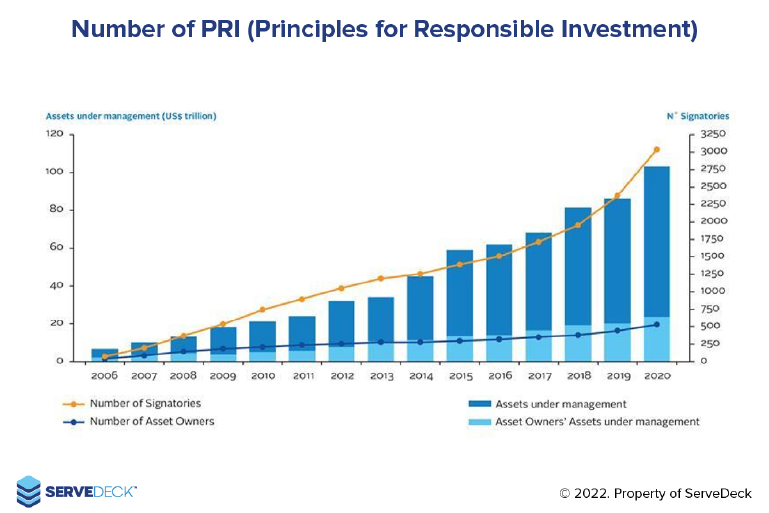
The question now is, how can we combine Integrated Facility Management with IoT and keep it compliant with ESG framework?
Smart Solution for Facility Operation and Management is an omnichannel multiple-user digital tool that, in the past few years, has become the hange strategic factor worldwide. An easy-to-be-adopted digital platform connecting all the hard and soft services normally offered by FM companies to a centralized dashboard. This will keep receiving data from equipment, security, and environment data reading probes (IoT), allowing the delivery of impeccable services in a punctual and professional manner while continuously collecting data that will enable more efficient facility management at large!
Not far is the day when tenants of an office building will enter the premise via facial recognition. When reaching their desk a few minutes later, the coffee will be just poured into their cup, their daily schedule had already been on screen, and the delivery boy, alerted by the system, will be waiting beside the desk for acknowledgment of receipt mail.
Additionally, the engineer in charge of the air-conditioning system would be alerted that the best time for some recurring maintenance is between 12.30 pm and 2pm and, once on the job, the engineer will be able to have on his mobile the complete maintenance history of the equipment through a simple scan of QR code.
The "Killer" Features of IoT Applied to Facility Management
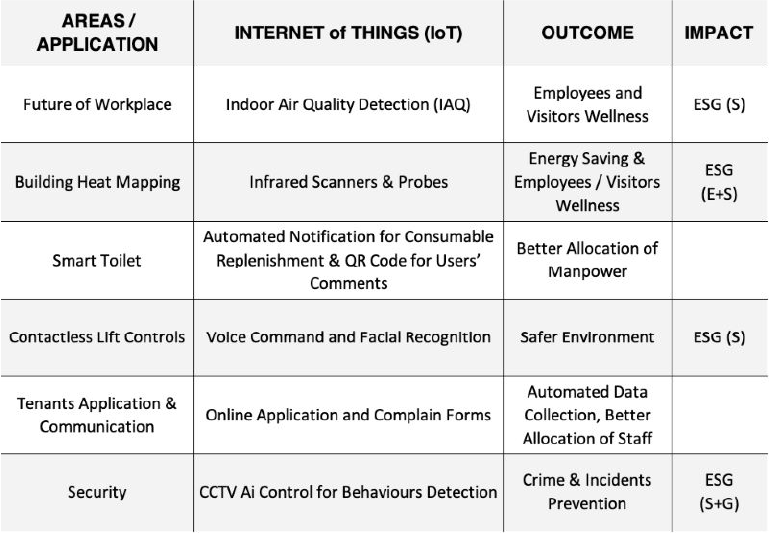
The above are just simple examples used to open the mind towards innovative and creative thinking on how IoT and Smart Integrated Facility Management Solution could extensively help towards the achievement of FM Excellence.
Knowledge on IoT Application to Facility Management
ServeDeck has recently conducted a simple survey on this topic, and the outcome shows how most asset owners and/or facility managers are already moving towards this direction.
The simple question of the survey was: "IoT links devices/equipment/environment via internet. Do you know how it works and what benefits a facility manager will gain by using it?”
-
47% of the respondents has replied “Yes, I use it extensively”,
-
33% “Yes but I don’t use it”,
-
13% “I’ve only heard of it”
-
7% said they “never heard of IoT”
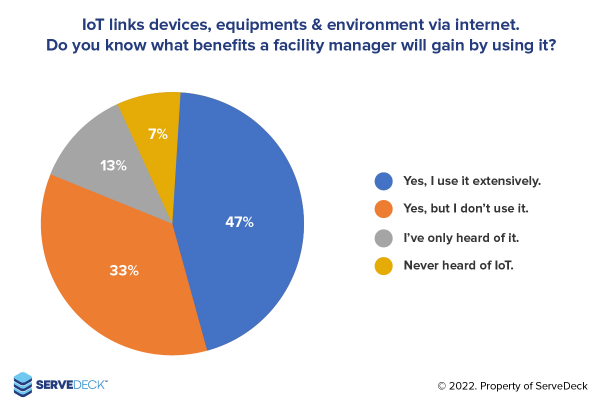
The result of our survey shows how much, in Malaysia, FM has been adapting to the digital transformation process and implemented smart facility management. ServeDeck can proudly say that its All-in-One Digital Solution has been helping countless asset owners and facility managers in their daily challenges, improving the quality of the services provided and raising the bar on the users’ experience.
Do get in touch with us to know how ServeDeck could help your organization achieving excellence in services provided!
ABOUT THE AUTHOR
.jpeg)
The opinions expressed in this article are solely of the author, Dr Daniele Gambero.
Dr Gambero has been an expatriate to Malaysia from Italy, since 1998 and has more than 35 years of real estate experience. He is the co-founder and group CEO of REI Group of Companies, the Co-founder of Propenomy.com and the deputy president of the Malaysia Proptech Association.
In the past 10 years Daniele, as international and TEDX speaker, has engaged several hundreds thousand people talking about Property, Economy, Propenomy, Digital Marketing and Motivation. He is also a bestselling author and columnist on several magazines and main stream media. You can reach him directly through his LinkedIn page here.
SHARE THIS POST:
Comments (0)
Leave a Reply
Your email address will not be published. Required fields are marked *

